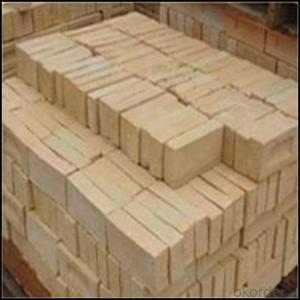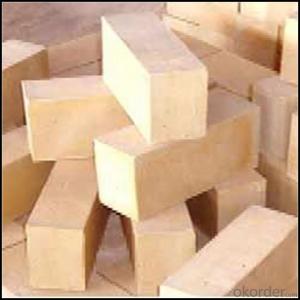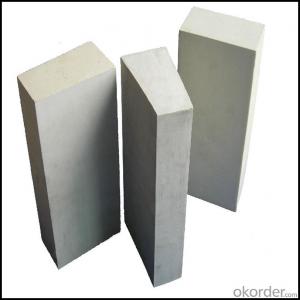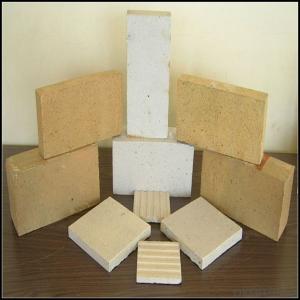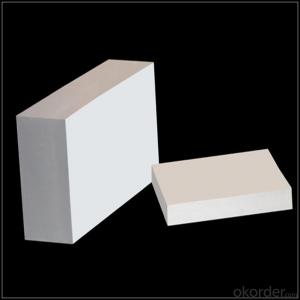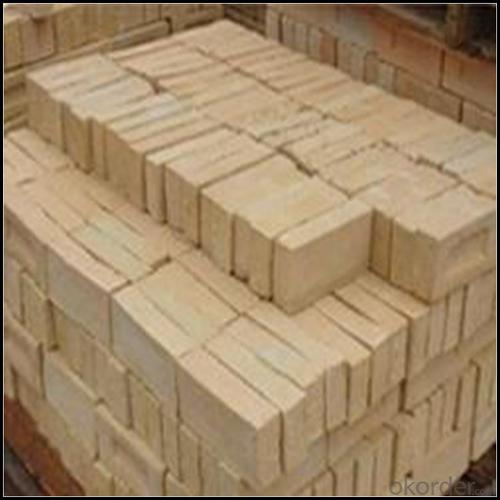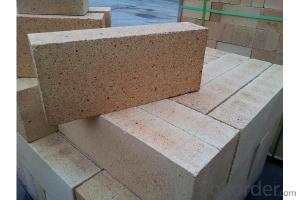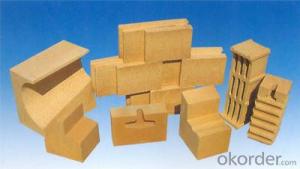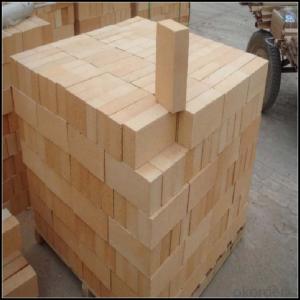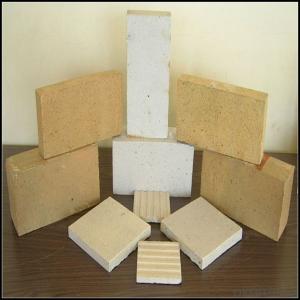High Alumina Insulating Fire Brick for Furnace
- Loading Port:
- China main port
- Payment Terms:
- TT OR LC
- Min Order Qty:
- 1 m.t
- Supply Capability:
- 3000 m.t/month
OKorder Service Pledge
OKorder Financial Service
You Might Also Like
Refractory Brick
CMAX firebricks are classified under temperature between 1300℃ to 1700℃, manufactured from high purity alumina clay.
Refractory bricks the main raw material for aluminum silicate fiber cotton, using vacuum
forming production process, operation and add silica sol, aluminum phosphate inorganic binder,
its role is to ensure that the products of the high temperature strength.
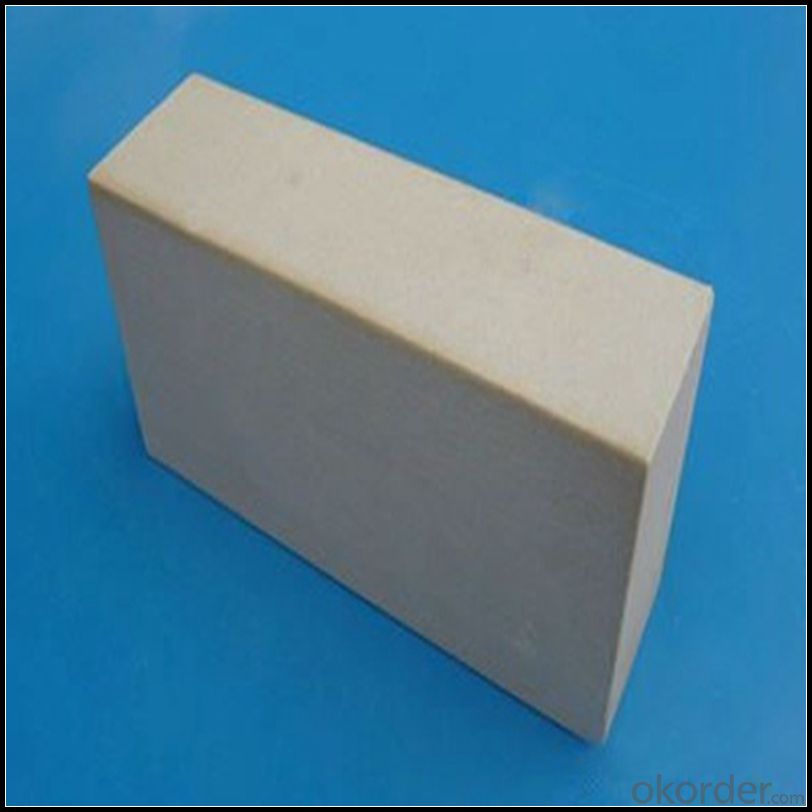
Features
1. High refractoriness.
2. Good spalling resistance and wear resistance.
3. Good corrosion resistance.
4. Good thermal shock resistance.
5. High mechanical strength.
6. High-temperature creep rate is low.
7. Good volume stability at high temperature.
Application
Fire brick is widely used in Blast furnaces, Hot Blast Stove, Steel ladle lining, Reheating furnace, Cement kiln, Tunnel kiln,Boiler, Coke oven, Waste incinerators ,Carbon furnace, Glass kiln , Steel smelting furnace and various kiln lining and thermotechnical equipment, etc.
Data Sheet
Classification Temperature (℉/℃) | 3000/1650 |
Bulk Density (g/cm3 ) | ≤1.0 |
Thermal Conductivity | |
800℃, W/m.K | ≤0.39 |
1000℃, W/m.K | ≤0.43 |
1200℃, W/m.K | ≤0.48 |
Reheating Linear Change (%) | 1550℃×12h |
≤0.9 | |
Chemical Composition (%) | |
Al2O3 | ≥75 |
Fe2O3 | ≤0.5 |
Packaging & Shipping
Packaging Details:Be packed in fumigated wooden pallets
Delivery Detail: 30 days after order

Our Services
Optimum solution and product supply of refractories for high temperature industries, such as iron steel, non-ferrous, petrochemical and building materials.
Engineering design, contract and consult for refractories, and civil architecture design.
Research, development, manufacture and sale of superhard materials.
R&D, manufacture and sale of special packing materials for export.
Inspection, supervision and arbitration of refractories.
Consultation and services in refractories information.
Training and cultivation of high-level talents in refractories profession
Sales Network

Company Information
CNBM (China National Building Material) Group is the largest comprehensive building materials group in China that in integrate scientific research, manufacturing and logistics into one entity. The largest building materials and equipment specialists in China. Upon State Council approval, today CNBM owned more than 300 subordinate manufacturing factories and servicing companies. There are 6 fully owned public listed companies and 11 partially owned with substantial shares public listed companies. In many of these fields, CNBM is playing the leading role in the building industry in the country.
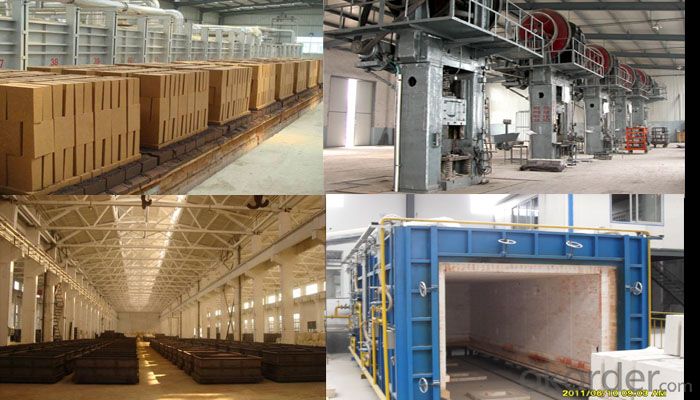
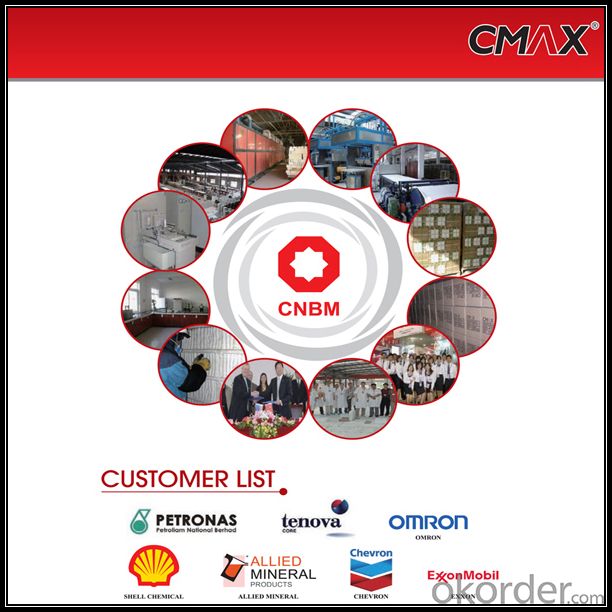
FAQ
1. Which products do you have?
We have all kinds of refractory brick, castable, mortar, cement, ceramic fiber products, etc.
Or you could browse our products to choose what you need.
2. Can you give me a brief introduction of the application of your products?
We are mainly specializing in the refractory materials in iron and steel, cement, glass, ceramics, petrochemical, electric power Industry, etc.
3. If I need your offer, what information do you need?
In order to choose suitable products, it will be appreciated to provide us the information, such us specification, technical data, order quantity, products application etc. If any question, please contact us freely.
- Q: Can insulating fire bricks be used for insulation in gas furnaces?
- Yes, insulating fire bricks can be used for insulation in gas furnaces. They are designed to withstand high temperatures and provide excellent insulation properties, making them suitable for use in gas furnaces to improve energy efficiency and enhance overall performance.
- Q: Can insulating fire bricks be used in the construction of combustion chambers?
- Yes, insulating fire bricks can be used in the construction of combustion chambers. Insulating fire bricks are made from lightweight, porous materials that have excellent thermal insulation properties. This makes them ideal for use in high-temperature applications, such as combustion chambers, where the insulation helps to contain and control the heat generated during the combustion process. Insulating fire bricks have a high resistance to heat transfer, which allows them to effectively retain heat within the combustion chamber. This helps to improve the overall efficiency of the combustion process by reducing heat loss to the surrounding environment. Additionally, the insulating properties of these bricks can help to prevent overheating of the outer walls of the combustion chamber, reducing the risk of structural damage. Furthermore, insulating fire bricks are designed to withstand high temperatures, making them highly durable and resilient. This is crucial in combustion chambers where intense heat and fluctuating temperatures are common. Their ability to withstand thermal shock and thermal cycling makes them a reliable choice for this application. In summary, insulating fire bricks are an excellent choice for the construction of combustion chambers due to their thermal insulation properties, ability to retain heat, and resistance to high temperatures. They contribute to the overall efficiency and safety of the combustion process, making them a valuable component in combustion chamber construction.
- Q: Are insulating fire bricks resistant to metal penetration?
- Yes, insulating fire bricks are resistant to metal penetration. These bricks are designed to have low thermal conductivity and high refractoriness, making them an effective barrier against the penetration of molten metal.
- Q: Can insulating fire bricks be used for insulation in chemical reactors?
- Yes, insulating fire bricks can be used for insulation in chemical reactors. Insulating fire bricks are designed to have excellent thermal insulation properties, high temperature resistance, and low thermal conductivity, making them suitable for insulating and maintaining high temperatures in chemical reactors.
- Q: Can insulating fire bricks be used in the construction of glassware molds?
- Insulating fire bricks are indeed applicable for the construction of glassware molds due to their exceptional insulation properties. These bricks, crafted from lightweight materials, possess excellent insulation capabilities, rendering them suitable for deployment in high-temperature scenarios like glassware molds. They can withstand the extreme heat generated during the glass molding process and contribute to maintaining a steady temperature within the mold. Moreover, these bricks exhibit low thermal conductivity, which prevents excessive heat dissipation and ensures efficient energy utilization. All in all, by incorporating insulating fire bricks into the construction of glassware molds, one can achieve superior heat retention, enhanced thermal efficiency, and improved mold stability, ultimately leading to the production of higher quality glass products.
- Q: Can insulating fire bricks be used in steam boilers?
- Yes, insulating fire bricks can be used in steam boilers. They are designed to withstand high temperatures and provide thermal insulation, making them suitable for steam boiler applications.
- Q: Are insulating fire bricks resistant to alkali-silica reaction?
- Yes, insulating fire bricks are generally resistant to alkali-silica reaction due to their low alkaline content and high silica content.
- Q: Can insulating fire bricks be used in heat exchangers?
- Insulating fire bricks are indeed applicable for heat exchangers. Their design aims to provide exceptional thermal insulation, making them perfect for high-temperature scenarios like heat exchangers. These bricks are crafted from lightweight substances and possess minimal thermal conductivity, enabling them to effectively minimize heat loss or gain within the heat exchanger. Furthermore, insulating fire bricks exhibit remarkable resistance to thermal shock and can endure extreme temperatures, solidifying their reliability for heat exchanger applications. Ultimately, incorporating insulating fire bricks in heat exchangers can enhance energy efficiency and overall performance.
- Q: Can insulating fire bricks be used in the construction of kilns?
- Yes, insulating fire bricks can be used in the construction of kilns. Insulating fire bricks are designed to have a high insulating value, which means they can withstand high temperatures while minimizing heat loss. This makes them ideal for kiln construction, as they help to maintain and regulate the desired temperature within the kiln. Additionally, insulating fire bricks are lightweight and easy to handle, making them convenient for use in kiln construction. They are also resistant to thermal shock, which is important in kilns where rapid temperature changes may occur. Overall, insulating fire bricks are a popular choice for kiln construction due to their insulating properties, durability, and ease of use.
- Q: Are insulating fire bricks resistant to weathering?
- Yes, insulating fire bricks are resistant to weathering.
Send your message to us
High Alumina Insulating Fire Brick for Furnace
- Loading Port:
- China main port
- Payment Terms:
- TT OR LC
- Min Order Qty:
- 1 m.t
- Supply Capability:
- 3000 m.t/month
OKorder Service Pledge
OKorder Financial Service
Similar products
Hot products
Hot Searches
Related keywords
